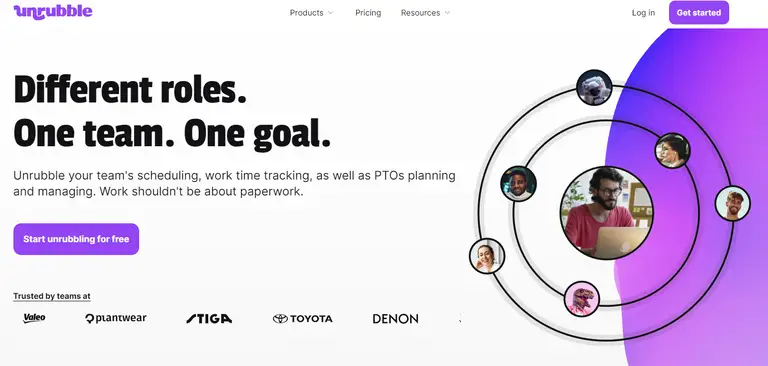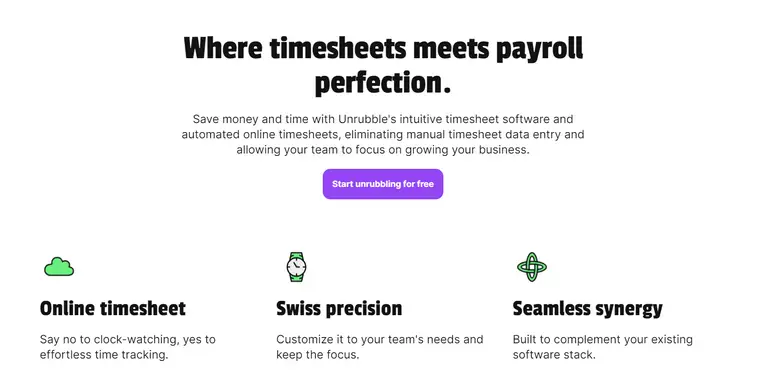Scrolling Instagram feed, overtaking breaks, missed deadlines – these are all signals of time wasters at work. And as a manager, your job is to help them to get out of this wasting time cycle. Luckily, it’s not as challenging as you might think.
Let’s take a look at how to identify a person who struggles with losing time and how to support them in getting back on track.
Who is a time waster?
Time wasters are those who procrastinate and avoid getting things done. They simply leave important tasks untouched and decrease productivity. Sometimes it may affect the workflow of the whole team.
Consequences of keeping time wasters in your team
See the stats on what people tend to waste time for.
- You’ve probably attended the meeting that could be an email. Some of them are just time wasters. Did you know that the average employee spends around 31 hours each month in meetings that are considered time-wasting? (Golden Steps ABA)
- Multitasking is a buzzword when speaking of productivity, but it might not necessarily help you out - only 2.5% of employees can multitask effectively.
- In an average workday, people check their email 15 times. Also, they get tons of irrelevant emails per day, it’s approximately 120 messages per day, which distract employees from deep work.
- 80% of people say that chatty coworkers distract them from their work. It’s great having a chat during office hours, but it might not be that beneficial sometimes.
- People spend around 2 hours and 2 minutes procrastinating at work.
Sadly, a huge amount of time is getting wasted every day.
How to identify time wasters?
We’ve got some tips to spot time wasters to help everyone get things done more productively.
Signs of time wasting
There are some behaviors that you can recognize in a person with time management issues. We’ve gathered a handy list for you.
Using social media a lot during working hours
Spending time scrolling is not the best way to reset one’s brain. Social media is full of stimuli that will make an employee feel overwhelmed rather than relaxed.
And when you see a person going through their Instagram feed during their working hours, you may notice a time waster.
Overtaking breaks
Breaks are productive, and there are many studies on that. However, taking them extensively brings your team members away from completing their tasks. Then, an employee may have trouble getting involved in the project, and finishing it would take more than usual.
Making non-work related calls frequently
We all need to take a breath from time to time, but non-work calls tend to be time-consuming. Also, it’s a similar case to overtaking breaks. Private calls might be a major distraction.
Delaying tasks unnecessarily
Putting off the tasks creates a snowball effect. It starts with one task, then another, and before one knows it, they have a whole avalanche of unfinished work piling up. And that’s something a time waster might enjoy doing.
Difficulty in maintaining attention on work tasks
It's natural to have moments of distraction and difficulty maintaining focus. We're only human. However, if it becomes a recurring problem, it's time to reassess one’s time management and identify time-wasting activities.
Spending a lot of time doing nothing
When doing nothing specific, an employee misses a lot of opportunities for intentional, productive breaks, taking some time off the screen, or even stretching their back.
These are all the activities that help to refresh, and instead, some people tend to waste time doing nothing. And it’s not the dolce far niente style, as the deadlines hit hard after all.
Engaging in non-work related conversations too much
It’s good to catch up on how everybody’s doing, but it might be a trap with a big “time-waster” sign on it. Of course, a little chit-chat creates a positive work environment, but it might evolve into a bad habit.
Delivering less than expected
In this case, it’s very probable that an employee does not put in the proper time, effort, and focus needed to succeed. It is possible that some time passed by unproductively, and some projects were neglected as a result.
Receiving complaints about an employee's inefficiency
It’s a strong indicator that time management needs to be reorganized. What’s more, complaints may lead to frustration among colleagues and clients who rely on that employee's work or collaboration.
Poor time management or a lack of motivation might be a hint to managers that something’s wrong, and it’s worth talking it through.
How to eliminate time wasters?
There’re some methods of spotting a time-waster. You don’t have to do it completely on your own – we’ve got an excellent tool you might want to use.
Strategies for addressing time wasting
Let’s go one by one with each method to get the bigger picture of eliminating and identifying employees with time management troubles.
Implement tools that can help improve focus and productivity
One of them is Unrubble. With its capabilities, you can track time and manage it more efficiently (but not only). Implement the tool and make sure everything is in order. It’s an app, so using Unrubble is super comfortable.
Set clear and measurable goals for employees
Having a clear goal (or a few smaller goals) ahead of you is a great motivator. However, it’s good to define them precisely at first. Otherwise, this strategy is demotivating.
Make the goals SMART, then– specific, measurable, achievable, relevant, and time-bound.
Provide training on effective time management techniques
Equipped with the knowledge on how to manage their time, the team members might make the most of their work hours. Organize training sessions, workshops, or time management consultations.
Employees will learn about prioritization, task delegation, setting realistic deadlines, and minimizing distractions.
Give frequent and constructive feedback on performance
Feedback should focus on identifying areas for improvement, recognizing strengths, and providing actionable suggestions. If the evaluation is constructive, employees reflect on their work habits and modify them as needed.
Address time-wasting habits as soon as they're noticed
A decent talk is a good starting point. As soon as such a habit is noticed, address it, and listen up to the other person. Provide guidance on more effective approaches, and communicate clear objectives for managing time.
Promote a healthy work-life balance to prevent burnout
Working too much may lead to burnout. Eventually, people feel unmotivated, contributing significantly to engaging in common time wasters. Offer flexible work arrangements, implement physical and mental health programs, and, as a leader, set an example of having a healthy work-life balance as well.
Creating a productive environment
As a manager, you can help reduce the biggest time wasters also through organizing a productive work environment. Here’s how to do it:
Encourage open and honest communication
When employees feel comfortable expressing their thoughts out loud, it opens the door for effective problem-solving. And to feel that way, try to be non-judgemental and demonstrate transparency, vulnerability, and empathy towards them.
Also, invest in your soft skills. You’ll need them to deal with interacting with team members efficiently. It’s very probable that employees will feel safe around you if you know how to speak to them.
Design a collaborative and focused workspace
Managers have the power to create a great workspace that inspires others to perform well. Organize a space for deep work, as well as for brainstorming in a bigger group.
💡 Note that good lighting makes a difference!
Allow regular short breaks to recharge
Intentional breaks reduce stress and may help fight procrastination and avoid time-waster habits. Encourage your team to take or even schedule some time off when needed.
Make necessary resources available for employees
Do you know this feeling of getting stuck doing something because you can’t find that one piece of information? Don’t make it happen again. Provide all the vital resources such as tools, technologies, information, and support required to perform one’s roles well.
Organize activities that boost employee engagement
These could be: outdoor adventures like escape rooms, team lunches, quarterly awards, fitness classes, knowledge-sharing sessions, and more. Come up with something that builds strong relationships.
How can time tracking help reduce wasting time?
One of the most efficient ways to minimize time waste is by tracking it. Not convinced? Allow me.
Check out its benefits and how it may streamline everyone’s job.
Improved productivity
When using a time tracker, it’s easier to get rid of some of the time-waster habits. Without any monitoring, no one knows how much time was spent on a task. If trackable, it can be optimized to deliver better.
Better planning and project management
With too many things on their plate, employees often struggle to prioritize tasks. And a little helper, like a time tracking tool, lets them monitor the workflow and decide which tasks or projects deserve attention first.
Accurate billing
A time tracker prevents misunderstandings and ensures fair billing. It’s way easier to accurately bill clients if you know how long a project really took, isn’t it?
Enhanced sense of responsibility
Time tracking creates a sense of responsibility among employees as they realize their contribution to the company's success. On top of that, their estimates are more accurate, so they can plan their activities more effectively.
And what's the best way to track it? With Unrubble ⌚
How can Unrubble help you tackle time wasters?
Unrubble is a powerful tool that can help you avoid time wasters in your workplace.
It offers a premium online work time tracker that is easy to use and can save you hours each week on timesheets.

With Unrubble, you can keep track of work hours for every employee, set rules to eliminate lateness, and monitor staff overtime. You can monitor paid and unpaid breaks, create accurate timesheets, and even offers a modern mobile time clock, eliminating the need for expensive hardware.
Unrubble can also automatically identify time and attendance errors, calculate total work hours, overtime, and subtract breaks. It offers features like:
- timesheet rounding
- eliminating buddy clocking
- setting your own work statuses

Grab a free trial today and manage your team's time effectively, increase productivity with work schedules, and eliminate time wasters.
Key takeaways
- A time waster is a person who tends to spend time unproductively and ultimately slows down the workflow in a company.
- Office distractions, irrelevant emails, and unnecessary meetings might be a cause for wasted time.
- There are many techniques for reducing wasted time, like creating a productive environment or using tools.
- Unrubble is a great tool for tracking work hours and helps to recognize the potential for wasted time.
Get wasted time back with Unrubble
Unrubble helps tackle common time wasters with a breeze. With this tool and the techniques above, your team productivity will go sky-high. 🚀
Don’t spend too much time looking for a robust tool for time tracking. Use Unrubble! Sign up for free, and don't let your time control you.
Good luck!
FAQ: Eliminating time wasters
How to save up to two hours in a day at work?
Prioritize tasks by importance and urgency. Avoid multitasking, concentrate on one task at a time, and limit distractions. Streamline meetings by setting clear agendas, sticking to time limits, and only inviting necessary participants.
What is the most significant time waster?
Procrastination is a huge time waster. When we delay tasks, we lose valuable time and add unnecessary stress. Overcoming procrastination with immediate action is important. Then, you can optimize your performance and achieve better results.
Are there any tools that help identify time wasters?
Yes! One of them is Unrubble. The tool tracks time and then analyzes the data identifying patterns of low productivity or time spent on non-productive activities. So, it’s a very useful tool for managers and leaders.





